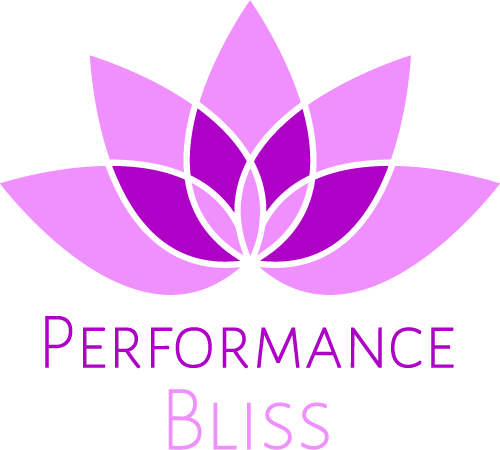For managers and small business owners with teams of 20-50 employees, creating personalized development plans based on accurate, data-driven insights is essential for fostering growth and improving team performance. Yet, transforming raw employee data into actionable strategies can be a challenge, especially without the right tools in place. This is where employee insights, gathered through performance tracking and feedback, become valuable assets in shaping individual and team progress.
This article will explore how managers can use employee insights to build personalized development plans and create performance strategies that drive continuous improvement. We’ll also discuss how tools like Performance Bliss, a SaaS platform under development designed specifically for small business teams, will help managers provide longitudinal feedback and track performance trends over time.
The Importance of Employee Insights for Small Business Success
For small businesses, every employee’s performance has a significant impact on overall success. Managers need to ensure that employees are not just meeting expectations but continuously growing and contributing to the team’s goals. Employee insights provide critical data points—such as work habits, strengths, and areas for improvement—that can guide managers in making informed decisions about performance management and professional development.
Without the ability to track performance trends and gather real-time feedback, managers may miss opportunities to correct issues early or fail to recognize when employees are excelling. Performance Bliss aims to solve this challenge by offering a platform that collects and organizes feedback and performance data, enabling managers to make data-driven decisions.
Gathering the Right Employee Insights for Performance Strategies
The first step in using employee insights effectively is ensuring that you are gathering the right data. For small businesses, where resources are often limited, it’s critical to focus on insights that will directly inform decision-making and employee development. Here’s how to ensure you’re collecting actionable employee data:
Capture Longitudinal Feedback
Longitudinal feedback—gathered consistently over time—allows managers to track performance trends and identify patterns that may not be immediately obvious in short-term reviews. Using a system like Performance Bliss, managers can easily capture ongoing feedback, giving them a full picture of how employees are evolving in their roles.
Use Quantifiable Performance Metrics
While qualitative feedback is important, quantifiable performance metrics provide a concrete measure of success. These metrics could include project completion rates, sales numbers, or customer satisfaction scores, depending on the employee’s role. By collecting both qualitative and quantitative data, managers can gain a holistic view of performance.
Include Self- and Peer Assessments
Employee self-assessments, along with peer reviews, provide additional perspectives on performance. Self-assessments encourage employees to reflect on their own achievements and challenges, while peer feedback offers insights into teamwork, collaboration, and communication.
Monitor Engagement Levels
Employee engagement is a critical factor in performance. Insights gathered from engagement surveys or direct conversations can help managers understand how motivated and invested employees are in their work. Low engagement often correlates with declining performance, so it’s important to track this metric closely.
By using a platform like Performance Bliss, managers can gather and store these insights in one place, making it easier to monitor performance trends and compare feedback over time.
Turning Employee Insights into Personalized Development Plans
Once employee insights are gathered, the next step is translating them into personalized development plans. These plans should be tailored to each employee’s strengths, weaknesses, and career goals, with a focus on helping them improve performance over time. Here’s how to effectively build development plans using insights:
Identify Specific Areas for Growth
Performance data allows managers to pinpoint exactly where an employee needs to improve. For example, an employee may have strong technical skills but struggle with communication or time management. By identifying these areas through feedback and performance trends, managers can create a plan focused on addressing those challenges.
Set Measurable Goals
Once the areas for improvement are clear, managers should set measurable goals that align with both the employee’s personal development and the company’s objectives. These goals should be Specific, Measurable, Achievable, Relevant, and Time-bound (SMART). For example, if an employee needs to improve project management skills, a SMART goal might be: “Complete three projects on time and within budget over the next six months.”
Leverage Employee Strengths
Development plans should not only focus on weaknesses. It’s equally important to recognize and leverage an employee’s strengths. For instance, if an employee excels in creative problem-solving, they could be given more opportunities to lead innovative projects. By building on strengths, employees feel more valued and engaged.
Provide Continuous Support
A well-constructed development plan includes ongoing support from managers. This might involve access to training, mentoring, or regular check-ins to track progress. Tools like Performance Bliss make it easier for managers to follow up on development plans and provide feedback consistently.
How Employee Insights Lead to Better Performance Strategies
Employee insights are not only useful for individual development but also play a key role in shaping broader performance strategies for the team or organization. By analyzing the data, managers can identify trends that affect overall productivity, collaboration, and engagement. Here’s how employee insights can inform your performance strategies:
Align Individual Goals with Business Objectives
Every employee’s performance contributes to the overall success of the business. By aligning individual goals with broader organizational objectives, managers ensure that each employee’s development is driving the company forward. For example, if the business’s goal is to improve customer satisfaction, employees in customer-facing roles should have performance goals focused on enhancing communication and service delivery.
Optimize Team Roles and Responsibilities
Employee insights provide a clear understanding of each team member’s strengths and weaknesses, enabling managers to optimize roles and responsibilities. If one employee excels at leadership while another is more detail-oriented, managers can assign tasks and projects accordingly. This not only improves team performance but also increases employee engagement by aligning tasks with individual skills and preferences.
Address Performance Gaps Early
Insights into employee performance trends allow managers to identify potential issues before they become major problems. If an employee’s performance starts to decline, managers can intervene early, providing feedback and support to help them get back on track. Performance Bliss supports this proactive approach by offering a platform that highlights performance dips in real time.
Enhance Collaboration and Communication
By reviewing feedback from peers and supervisors, managers can identify areas where collaboration or communication may be lacking. Using this data, managers can implement strategies to improve teamwork, such as scheduling more frequent check-ins or providing team-building opportunities.
Implementing Continuous Feedback Based on Employee Insights
To ensure that employee insights are driving long-term improvement, managers must implement a system of continuous feedback. Waiting until an annual or semi-annual review can lead to missed opportunities for growth. Here’s how to use continuous feedback to improve performance:
Provide Immediate Feedback
Timely feedback is one of the most effective ways to ensure employees stay on track with their goals. Rather than waiting for a formal review, managers can provide feedback as soon as a project is completed or when an issue arises. Performance Bliss allows managers to easily document and share feedback in real time, ensuring that employees receive the input they need when they need it.
Track Progress Consistently
Consistent tracking helps both managers and employees see how progress is being made toward goals. With tools like Performance Bliss, managers can track performance data over time, compare it to set goals, and adjust development plans as needed. This ensures that feedback is not just reactive but also strategic.
Celebrate Successes
Recognizing and celebrating achievements, even small ones, is key to maintaining employee motivation. By reviewing employee insights, managers can identify when an employee reaches a milestone or exceeds expectations, providing positive feedback that encourages continued success.
Adjust Development Plans as Needed
Employee development is not a static process. As employees grow and evolve, their development plans should be adjusted to reflect new challenges and goals. Regular feedback ensures that managers and employees can work together to continuously refine and update development plans.
How Performance Bliss Supports Data-Driven Employee Development
Performance Bliss is designed to help small business managers and owners make the most of their employee insights. By providing tools to track longitudinal feedback, measure performance trends, and offer continuous feedback, Performance Bliss simplifies the process of turning data into actionable strategies. With this SaaS platform, managers can create customized development plans for each employee, monitor their progress, and adjust strategies in real time.
This approach ensures that employee growth is not only aligned with personal goals but also contributes to the long-term success of the business. By using Performance Bliss, managers can ensure that every employee is on a path toward improvement, leading to a more engaged and productive workforce.
Conclusion: Turning Employee Insights into Actionable Strategies
For small businesses, the ability to transform employee insights into actionable performance strategies is crucial for growth and success. By gathering data through feedback and performance tracking, creating personalized development plans, and providing continuous feedback, managers can drive both individual and team improvement.
Performance Bliss offers the tools needed to gather insights, track performance, and provide the feedback required to turn those insights into meaningful action. By leveraging these tools, managers can ensure that their teams are always moving forward, improving performance, and contributing to the company’s overall goals.


